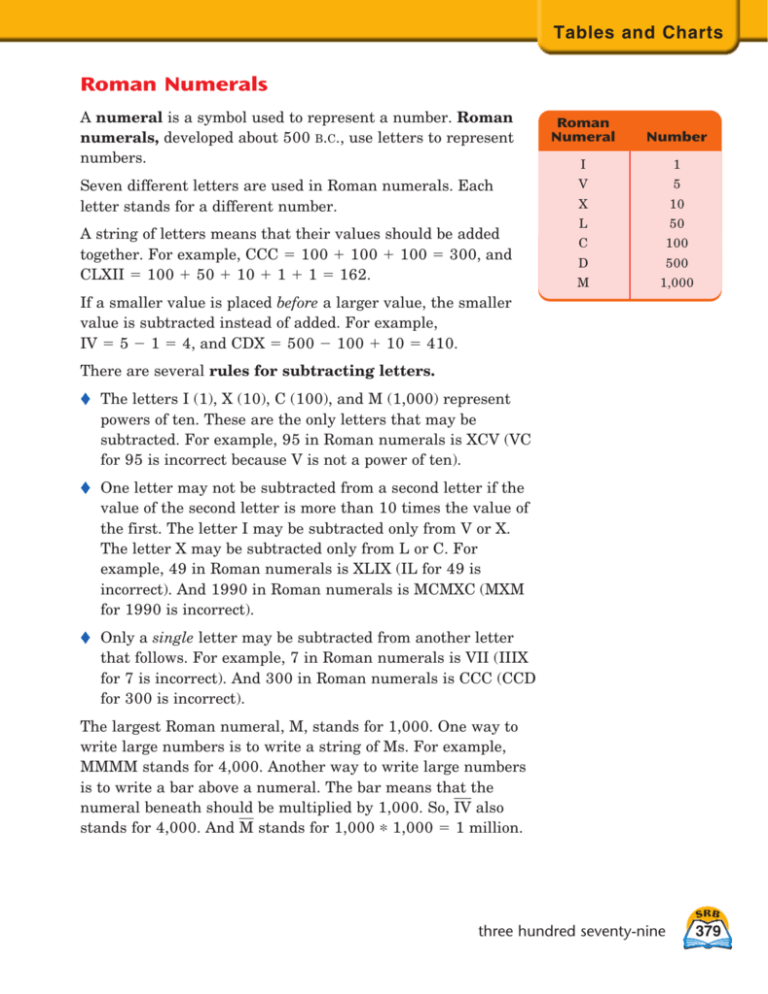Roman Numerals
advertisement

Tables and Charts Roman Numerals A numeral is a symbol used to represent a number. Roman numerals, developed about 500 B.C., use letters to represent numbers. Seven different letters are used in Roman numerals. Each letter stands for a different number. A string of letters means that their values should be added together. For example, CCC 100 100 100 300, and CLXII 100 50 10 1 1 162. Roman Numeral Number I 1 V 5 X 10 L 50 C 100 D 500 M 1,000 If a smaller value is placed before a larger value, the smaller value is subtracted instead of added. For example, IV 5 1 4, and CDX 500 100 10 410. There are several rules for subtracting letters. ♦ The letters I (1), X (10), C (100), and M (1,000) represent powers of ten. These are the only letters that may be subtracted. For example, 95 in Roman numerals is XCV (VC for 95 is incorrect because V is not a power of ten). ♦ One letter may not be subtracted from a second letter if the value of the second letter is more than 10 times the value of the first. The letter I may be subtracted only from V or X. The letter X may be subtracted only from L or C. For example, 49 in Roman numerals is XLIX (IL for 49 is incorrect). And 1990 in Roman numerals is MCMXC (MXM for 1990 is incorrect). ♦ Only a single letter may be subtracted from another letter that follows. For example, 7 in Roman numerals is VII (IIIX for 7 is incorrect). And 300 in Roman numerals is CCC (CCD for 300 is incorrect). The largest Roman numeral, M, stands for 1,000. One way to write large numbers is to write a string of Ms. For example, MMMM stands for 4,000. Another way to write large numbers is to write a bar above a numeral. The bar means that the numeral beneath should be multiplied by 1,000. So, 苶IV 苶 also stands for 4,000. And 苶 M stands for 1,000 * 1,000 1 million. three hundred seventy-nine 379










